Mainsail for an aquarium: selection and manufacturing methods
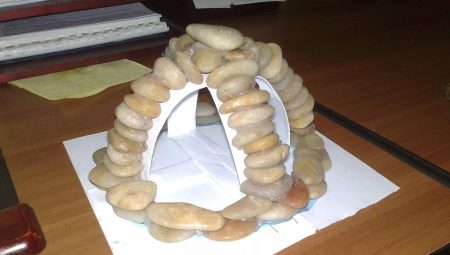
A grotto for an aquarium is not only a decorative element, but also serves as a shelter for fish. To create a unique design, you can do it yourself. Both special materials and improvised means will come to the rescue, for example: shells, polystyrene or clay.
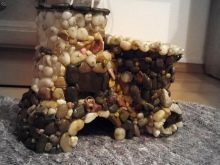
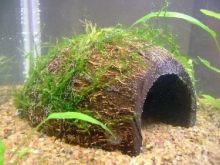

The purpose
The mainsail is a rather large decorative element. Because of this, not all aquarists agree to install it. But in some cases, the presence of this accessory is necessary, since it is able to perform protective functions and hide weaker fish from their aggressive and hostile counterparts.
Nevertheless, the choice is often made in favor of this decoration.... You can either purchase it in a store or make it yourself. The second option is chosen more often by people with a rich imagination and striving to create a unique design. It all depends on the preferences of the aquarist, his abilities and the availability of free time.
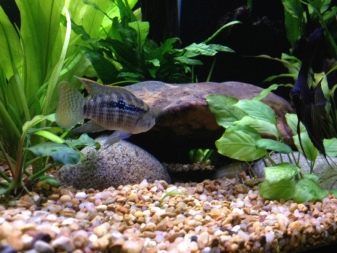
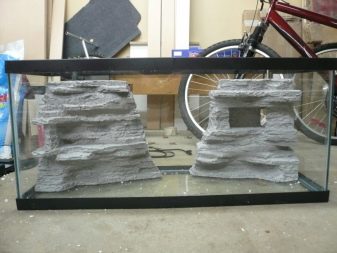
Requirements for materials
There are a lot of materials from which grottoes can be made. It can be glass and wood, or, for example, ordinary clay. If it was decided to create an accessory on its own, the owner of the aquarium first of all needs to worry about so that the materials meet all safety requirements... If left unchecked, the decoration can negatively affect the composition of the water, as well as the health and life of the inhabitants of the aquarium.
You need to check so that the composition does not contain too much iron... An excess of it will lead to an increase in the number of unfavorable algae, respectively, the aquarium will have to be cleaned much more often, as well as filtered.
As for the stones themselves, they should not contain lime, otherwise the water will change the acidity and hardness, and some of the inhabitants of the aquarium and living plants will simply die. In addition, stones cannot be taken from industrial quarries or any enterprises.
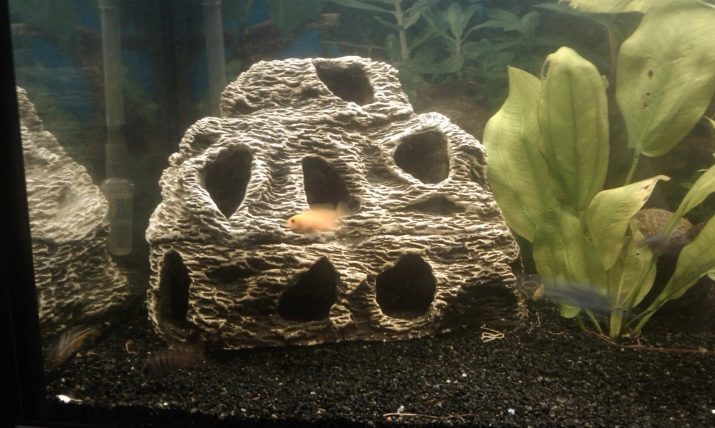
If the mainsail is self-made, the aquarist will need glue. In this case, experts advise focusing on such an option as silicone sealant: it is the most harmless.
As for the finished structural elements, you need to make them as smooth as possible... Active and nimble fish can get injured on sharp corners. Also, do not use wood that is capable of emitting tar. It is not recommended to use, for example, oak components. Better to choose something more secure.
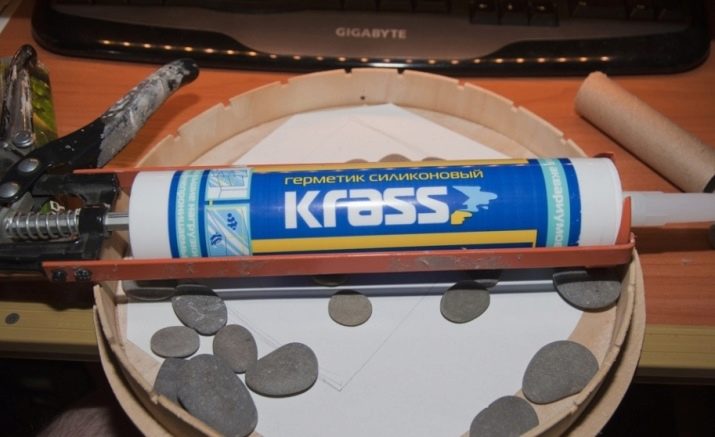
Finished goods
Some aquarists are quite satisfied with the ready-made models of grottoes presented on store shelves. This is justified, since such a design can be purchased and simply placed in a container, thereby saving time and effort.
Various decorations are chosen: in shape, size, colors. When selecting, it must be borne in mind that a small grotto will get lost in a large aquarium, so the size must be appropriate... Most of the offerings from specialist retailers include clay options that have many virtues.
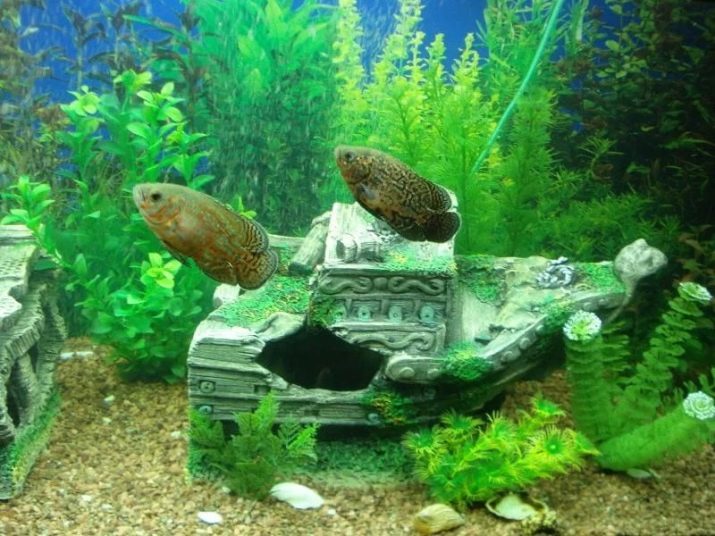
However, we must not forget about the forms. There are some of the most popular among consumers. Among them are the main-ship, the main-castle, the main-rock and the main-skull.
Mainsail in the shape of a ship often seen in aquarists. Usually it looks like a sunken pirate ship, broken into several parts. Most often, there are many compartments where the fish can take refuge. In addition, it is in it that you can hide the atomizer from the air compressor, which often negatively affects the appearance of the composition.
Underwater castle grotto looks just fabulous. One gets the impression that a real sea kingdom is located in the aquarium.
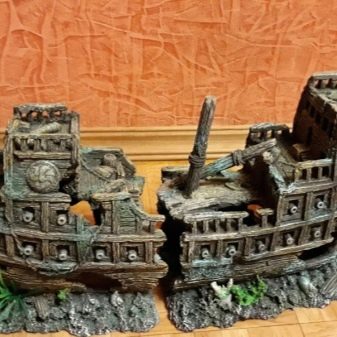
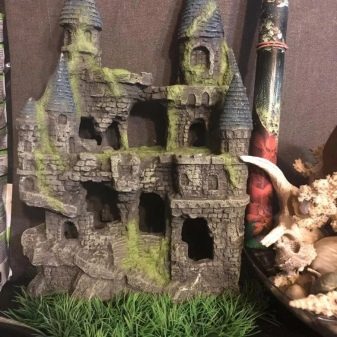
Grotto rock designed for those who love naturalness. Aquarists often place live plants next to it, and the grotto looks like part of the natural landscape.
And, finally, lovers of unusual and mysterious decor will like grottoes in the shape of a skull. Some people prefer to throw a few coins on the bottom, previously coated with a waterproof varnish. They will help create a brighter environment and decorate the composition.
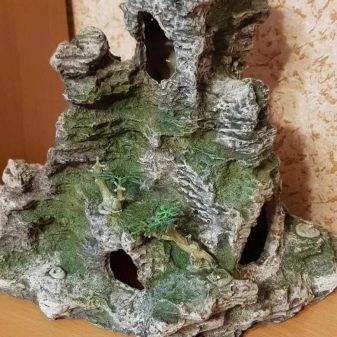

With your own hands
Most often, aquarists choose natural materials for making a grotto on their own, considering them more environmentally friendly and easy to work with. However, there may be some nuances here. For example, you need to take into account that places in which poor ecology are prohibited for the selection of parts of the future structure... Also, pebbles with rust-colored streaks are prohibited. They say that the iron content is increased in the element, respectively, the living inhabitants of the aquarium can be poisoned.
The wood must be fresh, rotten parts must not be used. It is also worth abandoning rocks that can color the water and release resin into it. For example, we are talking about oak.
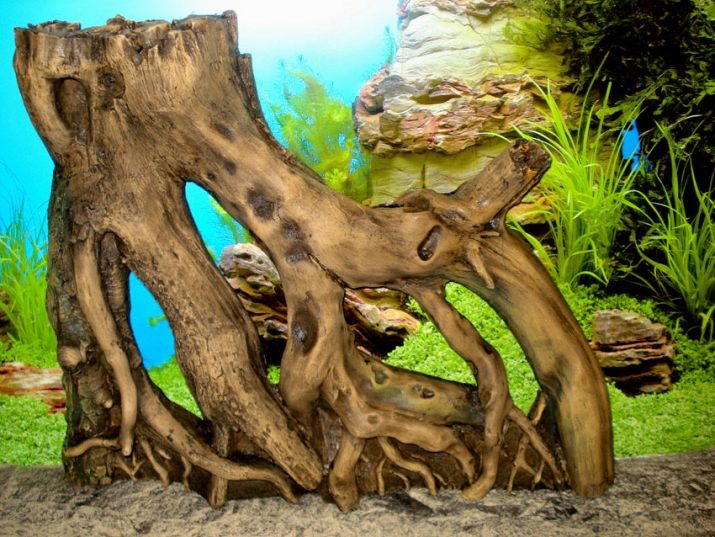
The decorations will need care. They need to be thoroughly washed regularly and even boiled. This will help eliminate problems such as the presence of parasites and disease-causing bacteria.
You also need to remember that the mainsail can be quite heavy. To avoid damaging your aquarium, you will need stands that can distribute weight. In addition, the structure must be installed near the reinforcement.
Of stone
Aquarists often decide to make a shelter from fairly large flat stones. Some of them can be fixed with silicone sealant if the fish are overly active and tend to displace elements. Best to use plastic, colorless glue of good quality.
Regardless of whether the grotto is glued or not, the stones should not fall apart initially. The contact area of the surface affects the quality of the seams. Elements should be degreased using a solvent. It should also be borne in mind that volatile compounds will be released at first. To get rid of them, it is necessary to place the structure in replaceable water for 3-4 days.
When it comes to soft stones, they make excellent monolithic grottoes. However, the process of making such products is laborious work. But an important advantage in this case is strength.
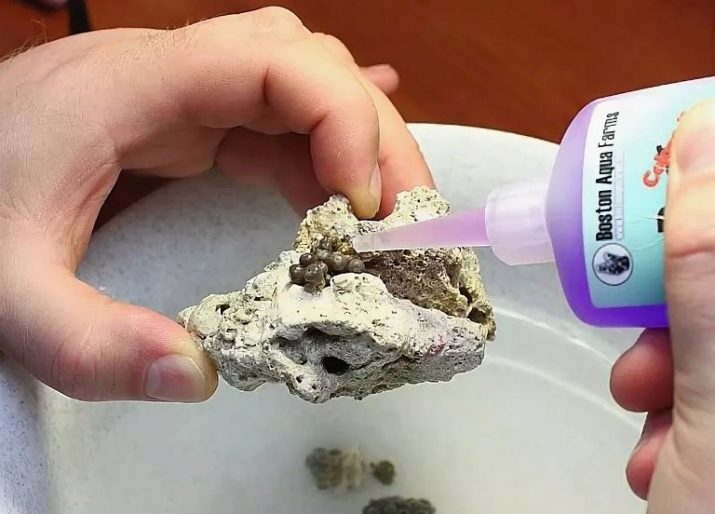
Limestone is fairly easy to work with. It does not cause difficulties in processing, however, without it, it is able to greatly increase the acidity level of the water, therefore, it requires rinsing and soaking. It should not be used with soft liquid.
Sandstone also affects the water, making it hard. In addition, it encourages more vigorous plant growth. Shell rock is able to regulate acidity and prevent excessive acidification.
As for lava, they are not able to change anything in the composition of the liquid. However, it has a rather high cost. And in order to prevent the release of substances, live plants and algae should be planted nearby.
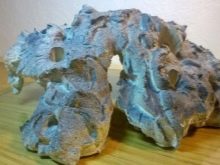
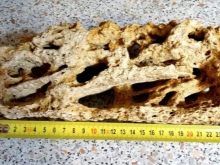
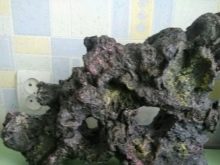
From pebbles
Pebbles are much finer than ordinary stones. Therefore, working with it can be disassembled step by step:
- flatter stones are selected first;
- then a template for the future grotto is made from cardboard;
- the dome is made in the center.
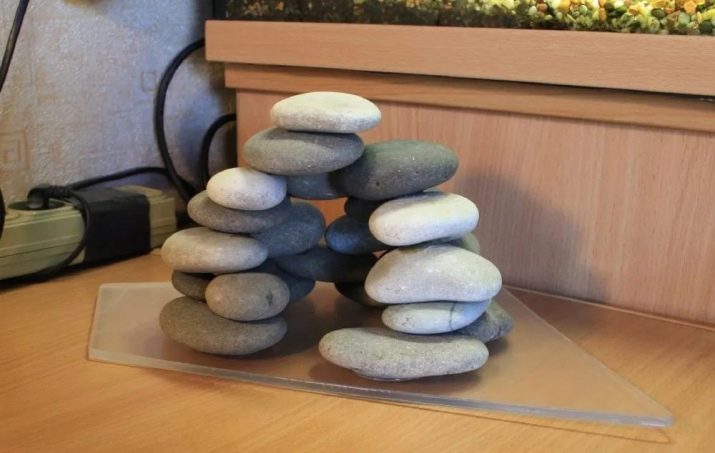
Made of wood
When choosing wood, you need to pay attention so that it is not resinous. You should not place bark in the aquarium; you should also process the outside and smooth out sharp edges. The caves are drilled out, and their edges can be processed with a blowtorch. The mainsail made of wood must be fixed.

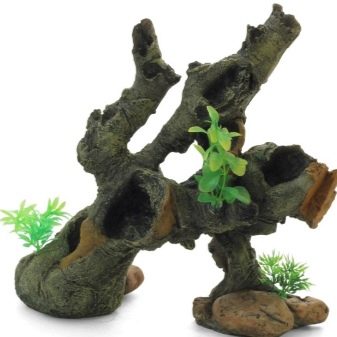
From clay
When choosing clay, preference should be given to white. It has practically no harmful impurities. The consistency of the material should resemble plasticine, then you can work with it. Many clay accessories are also sold in specialized stores.
When the desired shape is formed, the mainsail must be dried. The process takes from 3 days to a week. If the product is damp, it will crack during firing. When working at home, an oven is used for firing, which gradually heats up to about 250 degrees. You shouldn't rush in such a situation. Firing time - up to 6 hours.
Chilling the grotto quickly is also not recommended. First, it must cool in the oven, after which it is removed, rinsed with water and placed in the aquarium.
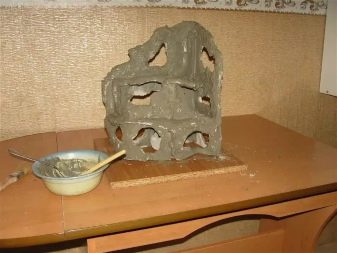
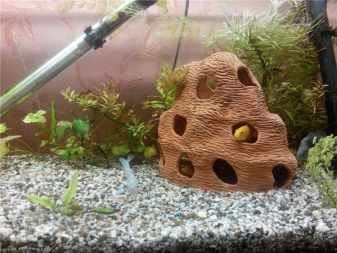
From coconut
The coconut grotto is a natural product that does not emit toxins and does not adversely affect the water. The main condition is that the coconut must be ripe, but not stale.
To begin with, the coconut is opened, milk is poured out of it. After that, the back region is sawed off and the pulp is removed. The shell is boiled 2-3 times for half an hour with the obligatory draining and rinsing of water.
If there is still pulp inside, remove it with a stiff brush. After that, the necessary holes are cut out, and the accessory itself is soaked in replaceable water until it stops staining it.
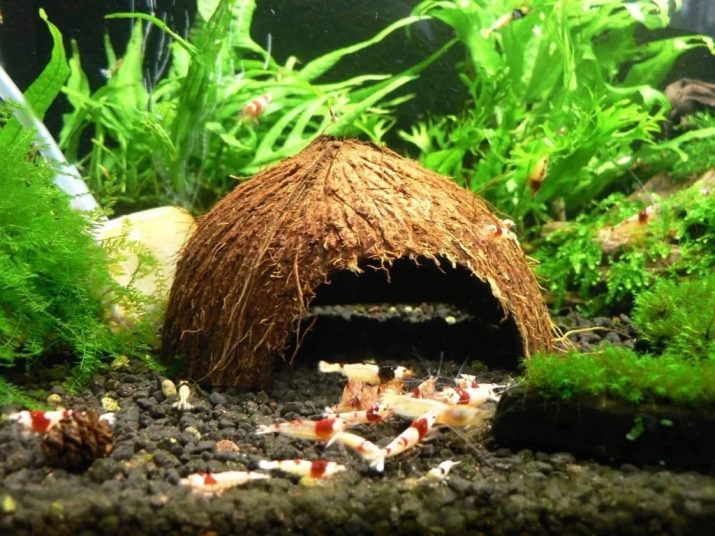
From the bottle
This is another convenient material for making a grotto. You can remove the neck or bottom of the bottle as follows: the rope is soaked in gasoline, the required area is tied with it, and set on fire. The glass is heated, after which it must be immersed in a cold liquid. When the bottle cracks in the right place, the chip is processed or melted.
Next, the container is greased with aquarium glue and rolled in pebbles or sand. On top you can place pebbles or other decorative elements.
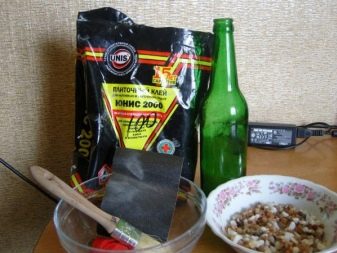
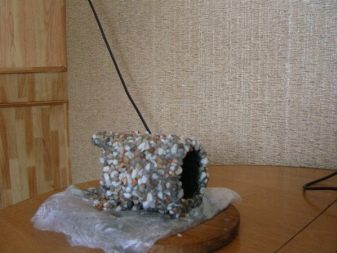
You will learn how to make a mainsail for an aquarium from a plastic bottle in the video below.








